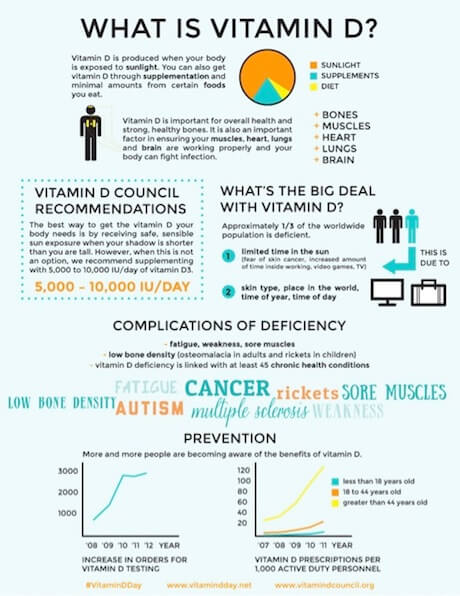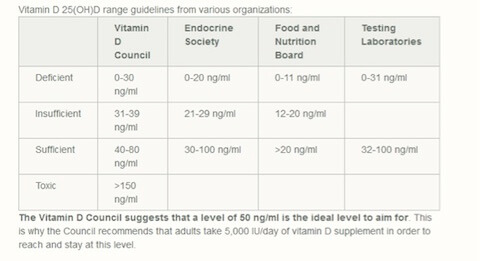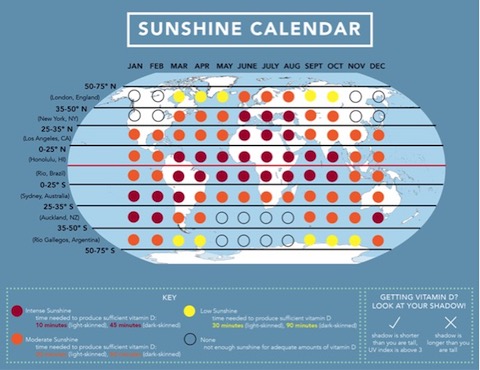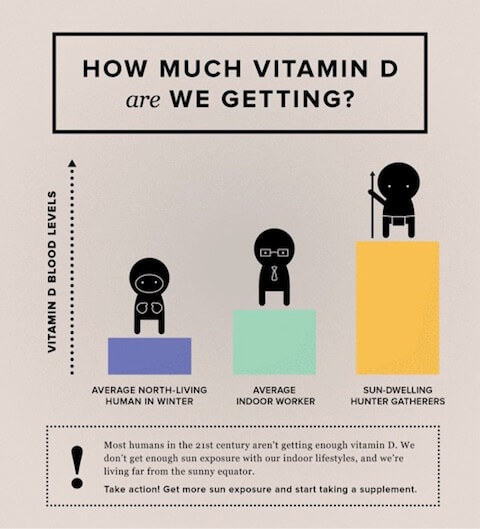
It was Vitamin D Day on November 2nd and it was a day to recognize vitamin D deficiency as a world problem. The day is led by the Vitamin D Society, Vitamin D Council and GrassrootsHealth, non-profit organizations dedicated to spread awareness on the vitamin D deficiency pandemic. According to the Vitamin D Day site:
Researchers agree that at least one third of the world is deficient in vitamin D, and some scientists even think a greater percent of people are deficient in vitamin D.
Why are so many people deficient, you might ask? It’s simple really. We get vitamin D from sun exposure. And now, more than ever, the world’s population lives an indoor lifestyle, avoiding the sun daily.
Doctors are beginning to discover that vitamin D deficiency is a risk factor for many diseases, including heart disease and cancer.
Furthermore, they’re discovering that vitamin D deficiency may make some diseases more severe, like respiratory diseases and autoimmune diseases like multiple sclerosis and lupus. And they’re discovering that vitamin D can be an important piece in the treatment of some illnesses and diseases, including multiple sclerosis, cystic fibrosis, asthma and many other diseases!
Low vitamin D is also a factor when it comes to mental health. Even though this information is not listed on the Vitamin D day site, there is much research supporting the connection:
There is a strong association between low S-25(OH)D and higher negative and depressive symptoms in psychotic disorders.
In women at risk for depression, early pregnancy low vitamin D levels are associated with higher depressive symptom scores in early and late pregnancy.
Participants with higher serum vitamin D (serum 25-hydroxyvitamin D) levels were significantly less likely to report problems with depression and anxiety.
Serum vitamin D status is related to the occurrence of anxiety in post-stroke patients and may be an independent risk factor of [post-stroke anxiety] after 1 month.
Here are eight key factors to know about vitamin D for Vitamin D day:
- Vitamin D comes from sun exposure, not your diet.
- Scientists and doctors agree that at least a third of the world is deficient in vitamin D.
- If you don’t get frequent moderate sun exposure or take a vitamin D supplement, you’re likely deficient in vitamin D.
- Moderate midday sun exposure is the best for making vitamin D.
- You don’t need to burn to make vitamin D.
- Vitamin D supplements are a good option in the wintertime to get the vitamin D you need.
In the northern hemisphere, the sun starts focusing more on the southern hemisphere. The sun’s rays strike the northern hemisphere at a different angle, an angle that isn’t quite as intense as during the summer. In consequence, your body has a harder time making vitamin D in the winter compared to the summer. The further north you live, the more difficult it is to make vitamin D in the winter.
Remember you can always check to see if you’re making vitamin D by looking at your shadow. If it’s longer than you, you aren’t making much vitamin D. And in the winter, your shadow is often longer than you.
Have no fear that you can’t make vitamin D! Vitamin D supplements are a good option in the wintertime. Low-pressure sunbeds and UV light units are also options to help you make vitamin D during the winter.
- Vitamin D is important for many things, including your bones, heart, respiratory system, brain [and mental health], and likely cancer prevention.
- Consider getting tested for vitamin D, to see if you’re getting enough.
Vitamin D tests are pretty easy. You can ask your doctor to add it to your next routine blood panel, or you can order an in-home test online through the Vitamin D Council.

Here are the vitamin D range guidelines from various organizations and the recommendations from the Vitamin D council:

This blog post by the Vitamin D Council helps you to interpret your results: I tested my vitamin D level. What do my results mean?
When you get your test results you will see a number in units of ng/ml, for example, 50 ng/ml. These are the units that health professionals in the United States use. Elsewhere in the world, vitamin D blood test results are given in units of nmol/l.
- To convert a test result measured in ng/ml to one measured in nmol/l, multiply the ng/ml number by 2.5. For example, 20 ng/ml is the same as 50 nmol/l (20 x 2.5).
- To convert a test result measured in nmol/l to one measured in ng/ml, divide the nmol/l number by 2.5. For example, 50 nmol/l is the same as 20 ng/ml (50÷2.5).
This great Sunshine Calendar shows the amount of time needed to produce sufficient vitamin D.

And this graphic shows why most of us aren’t getting enough vitamin D and why we need to supplement and get more sunshine exposure.

To learn more about vitamin D, please visit Vitamin D Council, Vitamin D Society, GrassRootsHealth and the Vitamin D Day website.
Do you have your vitamin D levels tested at least once or twice a year? Are they in the 40-80ng/ml range?
And do you spend time in the sun and supplement?